I am a sixty-year-old anesthesiologist fast approaching the home stretch of my time practicing medicine. I am hoping for five, maybe six more years at the most. When I have turned the desflurane vaporizer1 off after anesthetizing my last patient, I plan on being ready for whatever comes next. I am also a storyteller and write about the amazing and inspiring people I have had the privilege to care for. They are tales filled with great courage and resilience, about people who struggle mightily to survive and overcome their illnesses, sometimes in the face of long odds. At times these stories celebrate the unbridled joy of hope and recovery, but sadly not all of them end well, exposing at times the tragic and bottomless feeling of loss.
About Me
This story is a particularly difficult one to tell because it is about me. More specifically it is about the discovery in my forties that I carried a defective gene on my fourth chromosome called DUX42 that for some inexplicable, and maddening reason became active. My mid-life crisis didn’t involve a fancy sports car, a wild trip to Vegas, or god-forbid, a divorce. Instead, it manifested itself in the expression of this wayward gene, resulting in a progressive debilitating form of muscular dystrophy called facioscapulohumeral dystrophy, or FSHD3 for which there is no treatment and definitely no cure. The disease is slowly but inexorably replacing many of my muscles with useless non-contractile tissue, robbing me of the ability to do many of the things I love, including potentially my work. I sometimes imagine that this disease is like a thief in the night who steals my finest unique possessions. Instead of just taking them, he mockingly leaves poor facsimiles of the stolen objects behind, reminding me always of what has been lost and what can never be replaced.
dys-trophy
In this story, I will enlist the help of my daughter Kate4, also a writer and a keen, longtime observer of me. Her memories and impressions of the progression of my condition are candid and sharp, and she has kept me in my retelling of this story both focused and honest. I don’t know what I would have done without her. Kate’s entries are in italic.
(Kate) I mistakenly broke the word dystrophy into dy-strophy. I thought strophy might relate to strong. I look up strophy – nothing. I look up strong. The definition is everything you’d expect. But as I scroll further down on the entry for the word, I notice that strength becomes less about the body and more about the mind. I like this but wonder why it isn’t the reverse. The correct broken-up form of dystrophy is dys-trophy. The prefix is -dys: “destroying the good sense of the word and increasing the bad.” Trophy means growth. Therefore, dystrophy roughly means destroyed growth. When I search the interactive online Oxford English Dictionary for the definition of the word dystrophy, it asks back: do you mean to destroy? But I don’t.
In 1982, after spending four years at Stanford and graduating with a degree in International Relations, my only definitive plan for the future was to spend the next year living and working at the Stanford Sierra Camp5 and conference center at Fallen Leaf Lake. After rejecting the idea of going to law school, a career in the foreign service, or a job in consulting, I found myself like many young people do, at a crossroads – unsure of who I was and where I wanted to go next.
A New Direction
I made that decision on a bitterly cold October morning when a friend and I attempted to rescue and resuscitate two fishermen who had flipped their rowboat and fallen into the freezing water at the southern end of the lake. Unfortunately, our attempts at CPR failed, and both men suffered a cardiac arrest from the cold shock of the water, and we couldn’t save them. A horrible tragedy for these men and their families, it was also a turning point for me and a clear separation from who I was and who I wanted to be.
So, in the fall of 1983 at the age of twenty-two, having never taken any pre-medical classes, I enrolled at UC Santa Cruz6 in order to complete a second baccalaureate degree in Biology to meet the pre-requisites for entering medical school two years later. Most of my friends told me I was crazy and that this was impossible. Several of them after graduation had moved to Seattle and recently started working at a small company called Microsoft, recently relocated from New Mexico to Bellevue a few years before. They kept calling trying to convince me to join them. I was tempted but said no, as I was a man on a mission.
The pre-med advisor at UC Santa Cruz echoed my friends’ beliefs and told me that I had literally no chance of success given my age, my self-imposed deadline of two years, and my “good but not great” undergraduate grades. But that made me want it even more, and I committed myself to studying hard and being the type of student I never felt I was at Stanford – one who had a passion for the subjects I took. This was born of a combination of an insatiable newly discovered curiosity about science as well as an intense desire to achieve my goals.
In my first year at Santa Cruz, I lived in a tiny studio apartment attached to a house that sat on a bluff overlooking Santa Maria beach at Pleasure Point7 south of the university. I cloistered and studied like a monk, albeit a monk who lived near an epic surf-break. Every night I went to sleep to the sound of the crashing waves, and most mornings I rose before dawn to walk along the shore before heading off to my classes, my head filled with facts, equations, and organic chemistry reactions. My lonesome, but idyllic beach life was not to last, however, as, at the end of my spring quarter, the owner of the house sold it, and I had to move.
A New Love
I relocated to an entirely different, but equally isolated environment, a little rustic cabin in a stand of redwoods on Pine Flat Road in the small town of Bonny Doon8 in the Santa Cruz mountains far above the campus. By this time, I had sold my well-worn, and constantly in need of repair 1974 purple Triumph TR-6 convertible. The ragtop of my car was full of holes and leaked, and in the foggy, dark, and damp environment of the redwoods, the carpet of the car sprouted plants from the chia seeds I had spilled on it. So, I bought a relatively new type of bicycle and exclusively rode that. It was my first mountain bike – a Specialized Stumpjumper9, and I fell in love with it and the freedom it represented. I rode it everywhere and became healthy and fit.
My Determination
I worked harder that next year than I had ever worked in my life, taking upper-division biology and chemistry classes. I found work in a research lab, volunteered at the local hospital, prepared for and took the MCAT, and spent what little time I had left exploring the many fire roads and trails that extended far into the Santa Cruz mountains. To say it was one of the happiest times of my life is not too much of a stretch. It was solitary to be sure, lonesome but not lonely. It was intense, but it had a purpose.
The mental effort I put into being a post-baccalaureate pre-medical student matched the physical effort I expended strengthening and improving my skills as a mountain bike rider. I recall the feeling of immense accomplishment in memorizing the arcana of organic chemistry, the complexities of molecular biology, or the precise and orderly reactions of physical chemistry. In the late afternoons after class and on weekends, I learned how to keep my balance on steep terrain and negotiate the rocky switchbacks of the myriad single-track mountain biking trails that wound through the forests around Bonny Doon and Felton. Mostly I loved the purity and simplicity of my purpose, freed from other distractions and focused only on one goal. All the while I was blessed to live in a natural paradise suffused with the incomparable smells and sights of one of the few places in the world where the coastal redwoods meet the golden, grass-covered hills. In my dreams, I still roll beneath the cool, evergreen canopy on the rutted dirt trails that follow the many creeks – Liddell, San Vicente, Agua Pura, and Laguna that wind down the mountain under the tendrils of fog, to the salt spray of the rocky wind-swept beaches below.
My Next Steps
In the summer of 1985, I was admitted to Stanford Medical School. That autumn, feeling a bit wistful but excited for what was to come, I left Santa Cruz and my cabin in the woods behind. I returned to Stanford proud of my accomplishments of the past two years and of my tenacity. The day before I left my little mountain home for good, I rode my bike one last time down Empire Grade, the long and curvy road from Bonny Doon to the Santa Cruz campus. It felt like a catharsis or the shedding of a cocoon that I no longer needed. I raced down the twisting road, leaning heavily into its curves. I vividly remember that day and the look of the beautiful UC campus nestled in the pockets of redwood groves in the grassy hills set high above the Pacific coast. After my thanks and goodbyes, I turned my bike around to ride up the steep hill, thinking the entire way about the new and far more difficult path ahead. I remember how strong my legs felt as I slowly pedaled my way back up the steep winding grade.
(Kate) We hike the path that winds up the cliffs surrounding the beach. The incline is uneven and made up entirely of crumbling sedimentary rock. I worry about him because he keeps tripping. I lend a hand to help with his next step up, but he does not accept my offer. I’m fine he says, but I sense anxiety. I slow my pace and calmly talk to him about my own anxieties, not about him, just personal unrelated ones. I ask for advice. As he guides me through the complexities of love, fluidly contriving metaphors, he finds his stride and even passes me up the hill. I place my hands on his uneven shoulders, letting him guide me the rest of the way.
Time Goes By
The years of medical school passed quickly, and one by one I ticked off the major milestones of adulthood. I met my wife Dana at a party celebrating my successful completion of the first part of the national medical boards. To be honest, we had met a few years before. She appeared one morning, her face like some Botticelli painting, framed in sunlight at the door to my beach studio in Santa Cruz. She was on her way back to Berkeley from Santa Barbara to pick up one of my few visitors that year – my best friend and roommate from college, Dan, who was dating Dana’s sister Ashley. I distinctly remember telling myself that this was the woman I was going to marry. And miraculously several years later, I did. In the years that followed, I completed my internship and residency in anesthesiology, a research fellowship and seven years as a faculty member at UCSF. We had three children, four dogs, and bought and sold three houses in Seattle and Marin. I made a major career move in 1999, leaving academic practice for a large anesthesia private practice group10 in San Francisco for which I now serve as its chairman.
(Kate) I remember when I used to sit on these shoulders. Before the muscular dystrophy expressed itself, he had broad, strong ones that carried me all over our house – through the garden, up the stairs, down the stairs, and through the doorways where I always bonked my head. Now there are hollows where his muscles used to be. I see them, not as absences of strength, but as reminders of strength. They are memories of the weight he once carried as a young father – how he used to hold me up and help me grow.
What Noise?
In early 2002, a few months after my 41st birthday and fortunately a year after I had renewed my life insurance and disability insurance policies, I had just gotten back from a particularly vigorous, long, steep, and muddy mountain bike ride on Mt. Tamalpais. My long-delayed birthday present to myself was a new mountain bike, the fifth or sixth I had owned since my days at UC Santa Cruz. Coincidentally, my new bike was a beautiful Santa Cruz Blur11, and it was my most prized possession.
On this particular day, Dana and I were walking to Safeway to buy groceries after my ride, and I hadn’t changed out of my bike shoes. Even though I was at first oblivious to the metallic tap of my cleats hitting the floor, she wasn’t.
“Why is your shoe making that noise?” She said, “What’s wrong with it?
“What noise?” I answered
“The uneven one. The step-click, step-click. Do you have a rock stuck on the bottom of one of your shoes?”
Now I did notice. The noise of my footsteps wasn’t even. Every time my left foot hit the ground it hit harder and made a much louder sound than my right foot as if I were wearing tap shoes. I sat down on the curb and picked up my left foot with my right hand to examine the bottom of my shoe, expecting to see a pebble stuck in the tread, or jammed in the metal SPD clip. Other than a bit of mud, the sole of the shoe was clear. No rock. So, I tried walking again – step-click, step-click. Something was definitely not right.
After I got home, I paraded back and forth in front of the mirror in our front hall watching my feet and I noticed something. My gait was slightly uneven, and my left foot dipped a little lower than my right. As I passed the mirror each time, I noticed I was unconsciously lifting my left foot a little higher with each step so my toes wouldn’t hit the floor. I remember thinking to myself somewhat impassively, “Hmmm, interesting. You have a foot drop12.” as if my body was somehow not my own, and I was a patient I was examining. The long habit of generating a differential diagnosis kicked in. A foot drop can be caused by many things – spinal nerve root compression, peroneal nerve palsy, a wide variety of rare neurologic conditions…and muscular dystrophy.
(Kate) I watch Dad unabashedly take off his shirt and reveal his lopsided belly. The abdominal muscles on his left side look like they have surrendered and gone slack, which makes him look, half pregnant, as strange as that may sound. He carries on, unlacing his shoes, un-velcroing the braces strapped around his skinny lower legs, and keeping his shorts on, thank God. He clumsily steps up to the overhanging rock at the edge of our pool, finds his balance, points his chin into the air, and jumps. He makes the biggest splash of the whole family, always has. His half-belly rises over the concrete rock as he struggles to lift himself up, and out of the water.
Discoveries
The mystery of my foot drop took some time to figure out. At first, my neurologist thought I had a problem called “fat wallet syndrome”,13 a condition in which a wallet in the back pocket puts pressure on the sciatic nerve which sits deep in the gluteus maximus muscle. It is common in long-haul truckers and others who sit for extended periods. Anesthesiologists sit for many hours for long operations, he reasoned. There were two big problems with that theory. First, I carry my wallet in my right pocket. The foot drop was on my left side. And second, I like to stand most of the time during operations rather than sit. Besides, this syndrome is usually accompanied by pain and tingling, and I had neither. So, the next step in figuring out what was going on was to schedule an MRI of my spine to look for nerve root or distal nerve compression.
As I sat in the long claustrophobic tube of the MRI machine, listening to the loud bangs, clicks, and hum14 of the giant magnet surrounding me, I was sure that we would find something. The technician’s voice over the intercom reassured me that we would be done soon. But he was wrong. The radiologist, who was also a friend of mine, sat at the console and reviewed the scout images of my spine MRI looking for any evidence of lumbar disc herniation or spinal canal narrowing, and he saw none. They scanned lower and lower. Minutes passed, then an hour more. Finally, after what seemed like an eternity in the narrow tunnel, I was pulled out of the machine. My friend stood above me looking both puzzled and concerned, and with an expression and voice that I recognized all too well as a doctor about to deliver bad news said, “Something weird is going on with the muscles in your legs. We’re going to need to do more tests…”
In retrospect, it should have been more obvious to me. My mother’s younger sister Sue, a pediatrician who lived in Pennsylvania had long suffered from a variety of medical problems. She developed kidney failure in her early sixties and required a kidney transplant. She fatigued easily and always seemed a bit frail. Over the years, she became weaker and thinner, and her muscles literally disappeared before our eyes. But it was not until I began to develop signs of muscle weakness that we put two and two together and we both were tested for the genetic markers of muscular dystrophy. It was no surprise to me that each of our genetic test results came back positive for the same type of dystrophy. Aunt Sue lived for several years after the discovery of the source of her disability, but one morning in her mid-seventies she was found dead in her bathroom by her live-in caregiver having suffocated from an inability to keep her head upright.
More content by this author:
An Anesthesiologist Learns the ‘Facts’ about Epidurals in Childbirth Class
A Surgical Emergency Exposes the Crisis of the Young and Uninsured
Fighting Back
In the year after my diagnosis, I tried in equal measures to both minimize and fight this unfortunate disorder. So, I redoubled my efforts to exercise and train on my mountain bike by hiring a trainer named Bob who was a short, wiry muscular man without an ounce of fat on his body. He was an incredible motivator and was intimately familiar with every bike trail on Mt. Tamalpais, including the challenging but illegal ones. Against the better advice of my neurologist and my wife, I pushed myself hard and rode every day, either before or after work. I became surly and annoyed when I was on call and couldn’t ride. It became an obsession and a way of displacing my anxiety and sadness about my muscular deterioration.
This drive came to a head when I signed up for the Sea Otter15 race in Laguna Seca, near Monterey. The Sea Otter is the largest mountain biking festival in the world drawing thousands of participants of all ages. The long cross-country racecourse is plotted on the many trails around Fort Ord, in Monterey and it changes every year depending on the conditions. The year I entered, the course was nearly thirty miles long, traversing sandy trails, muddy pits, and steep inclines.
I was barely able to complete the race, and it was exhausting. Rather than reveling in a sense of great accomplishment and triumph as I should have, I felt that I had humiliated myself. My muscles simply did not cooperate despite the many months of training. I finished far back from my friends who trained with me, many of whom accompanied me for miles and miles of the race out of kindness before they pulled ahead and sped off into the distance. Bob stayed with me the whole time despite the fact that he could have completed two circuits of the course in the time it took me to do one.
When I reached the finish line, the first thing I did, after dropping my bike and limping dejectedly away from it, was to call my wife. I simply broke down and could not stop sobbing. It felt like I had lost something I could never get back. Never mind that I, a person with muscular dystrophy, had just successfully completed a thirty-mile bike race. I didn’t see it that way.
(Kate) He doesn’t cry often but one of the strongest memories I have of him is the first time I saw him cry. Through a crack in the door, I saw him and Mom sitting at the foot of an unfamiliar motel bed in Monterey, their knees touching. Moms’ arms were wrapped around his shoulders. Her blonde hair flowed over his head and framed his face as she whispered into his ear. I didn’t know what she was saying to him, but I wanted to. I moved closer to the crack of the door and heard a soft whimper. It’s wasn’t Mom. I looked again and saw Daddy’s red cheeks glistening. I didn’t know he was capable of crying. He seemed so sure of himself and strong all the time. Apparently, he was exhausted from the bike race. It was simply too hard.
The bike race was broken up into age categories. At the time, he was in his early forties and in good physical shape. In front of him at the starting line were the 20–40-year-old racers, and behind him was the older crowd, the teenagers, and the female racers. He remembered he made it up to a steep incline but could not muster the strength to pedal the whole way up. People from the other groups began to pass him. One teenager even rudely said to him as he elbowed past Dad, “Hey dude, this is a bike race, not a hike race!” When he got to the finish line he broke down in tears. He was exhausted, but also, I imagine, humiliated. The race wasn’t simply just too hard, his muscles were not working the same way they once did. It wasn’t his heart and lungs that failed him, it was his legs.
My Support
Since my diagnosis, I have been lucky to work with a variety of talented and brilliant physicians, physical therapists, and orthotic professionals16. My left foot drop has progressed due to the continued wasting of my gastrocnemius and tibialis muscles, and two years after the first sign of dystrophy, my right leg muscles began to waste as well. My shoulder and back muscles followed, but fortunately as of yet, not severely. Most annoying has been the loss of my abdominal muscles on the left. Try as I might, I cannot suck in my gut on that side, and it has made me a little lopsided and thrown my gait and posture off enough to be a problem when I hike.
For a person who has always loved to hike, living where I do in Marin County, home of the giant redwoods of Muir Woods, and some of the most spectacular hiking trails in the world, that has been difficult for me to take. But what keeps me going is the support of my wife and family, as well as the same tenacity of spirit that I took with me to Santa Cruz those many years ago. I love my work and the people I work with, and I love my patients. I cannot imagine leaving them.
♦♦Love Our Content?♦♦
Sign up for our Newsletter Here
My Gift to Myself
I continue to hike under the redwood trees and ultra-blue sky on the trails above my house in Marin, albeit a bit awkwardly. I am assisted by the orthotic AFO braces17 on my lower legs. They are made from lightweight carbon fiber and engineered to keep my toes up, so I don’t trip over myself. I also was recently fitted for a lumbar-thoracic corset of sorts that contains my lopsided belly, but I still haven’t gotten used to wearing it even though I know I should. It feels too constrictive. However, the most important and helpful present I gave myself on turning sixty last year was a new mountain bike. This one is special, and a little different than the rest. It is a top-of-the-line midnight blue Specialized Turbo Levo Expert Carbon18 electric mountain bike. It is a marvel of engineering and technology, and I ride it as often as I can. It makes me feel like I am twenty-two again as I pedal joyfully to the top of Mt. Tamalpais. It is without a doubt my most prized possession.
(Kate) It’s dark in my childhood room at night and there’s a strange creaking sound by my door. I’m not used to sleeping here anymore. Five years have passed since I left home for college, and I am visiting for a while before I move away again. My brothers are both gone as well, and the house seems big and empty. I move the covers over my head to muffle the noise, and then “conveniently” realize I have not kissed my old Black Labrador, Coal, goodnight. The familiar yellow light leaking from under the door of my parent’s bedroom flows into me, and it makes me warm inside.
I slowly open the door and see Coal sleeping, sprawled, all eighty pounds of him, on Mama’s legs, and she in turn nestles her head on Dad’s uneven shoulder. I imagine I left a permanent indent on that shoulder, where his muscles used to be – an indent from all those times I crawled onto those shoulders. An indent from the times I used his shoulder blades as handholds to lift myself up onto his back. An indent formed from constantly laying my head just beneath his chin and crying. To be honest, he still holds me up and helps me grow when I ask for support.
Mom’s hand moves to rest on his beautiful, lopsided stomach and stays there. They breathe in and out, all together as a unit – and I know as deeply as it is possible to know anything, that I am safe.
References
- Michael P. Dosch CRNA PhD, Darin Tharp CRNA MS, The Anesthesia Gas Machine, University of Detroit Mercy – Nurse Anesthesia – https://healthprofessions.udmercy.edu/academics/na/agm/index.htm
- U.S. National Library of Medicine, Medline Plus. DUX4 gene. https://medlineplus.gov/genetics/gene/dux4/
- Muscular Dystrophy Association, Facioscapulohumeral Muscular Dystrophy (FSH, FSHD) https://www.mda.org/disease/facioscapulohumeral-muscular-dystrophy
- Sad Girls Club, Kate Swisher. When we talk about our mothers’ bellies. https://www.sadgirlsclublit.com/post/when-we-talk-about-our-mothers-bellies-kate-swisher
-
Stanford in the Sierra, Summer Family Camp. https://sierracamp.alumni.stanford.edu/family-camp
- University of California, Santa Cruz. https://www.ucsc.edu/
- Pleasure Point, California
- Bonny Doon, California
- Specialized Stumpjumper, Wikipedia. https://en.wikipedia.org/wiki/Specialized_Stumpjumper
- Northern California Anesthesia Physicians. http://norcalanesthesia.com/
- Mountain Bike Review Forum. https://products.mtbr.com/product/older-categories-bikes/2002-full-suspension/santa-cruz/blur.html
- Mayo Clinic, Foot Drop. Overview and Symptoms. https://www.mayoclinic.org/diseases-conditions/foot-drop/symptoms-causes/syc-20372628
- Md Abu Bakar Siddiq, Israt Jahan, and SAM Masihuzzaman. National Library of Medicine. Wallet Neuritis – An Example of Peripheral Sensitization, Published online 2018 Dec. https://www.ncbi.nlm.nih.gov/pmc/articles/PMC6204659/
- This Is What An MRI Scan Sounds Like, YouTube. https://www.youtube.com/watch?v=7RgdWMyfqQc
- Sea Otter Classic, World’s Premier Cycling Festival 2021. https://www.seaotterclassic.com/
- Allen Orthopedic Labs, Advanced Orthopedic and Prosthetic Treament. https://www.allenorthopediclabs.com/
- ottobocks orthotics, WalkOn ankle foot orthosis. https://www.ottobockus.com/orthotics/solution-overview/ankle-brace-walkon/
- Turbo Levo Expert Carbon Mountain Bike. https://www.specialized.com/us/en/turbo-levo-expert-carbon/p/184423?color=293238-184423
***
Financial disclosure: TDWI did not receive compensation for the publication of this story.
***
Jeffrey Swisher, M.D.
Jeffrey L. Swisher, M.D.
I am a second-generation anesthesiologist and storyteller. I was raised in Roslyn Harbor, Long Island, and then Princeton, New Jersey. My decision to pursue medicine as a career followed an undergraduate education at Stanford University where I majored in International Relations. Realizing life in the foreign service was not my true dream, I had an epiphany on the shores of Fallen Leaf Lake in the Sierras on a frigid early spring morning. It involved two drowned fishermen and an hour of attempted CPR. I decided then and there that I wanted to become a physician in order to help people in distress.
So I enrolled at the University of California, Santa Cruz where I completed a second bachelor’s degree in Biology. Then I returned to Stanford University, to the School of Medicine, where I was awarded my medical degree in 1989. While at Stanford, I received awards and grants to do research in the Mexican State of Chiapas, working with indigenous Maya in the highlands.
I completed my internship in Internal Medicine and my residency in Anesthesiology at the Virginia Mason Medical Center in Seattle, Washington. And lived for a while on a houseboat on Lake Union where I proposed to my wife, Dana. Later we lived in a house in Madrona above Lake Washington with two black labs (Harriet and Amos) and a new son, Henry.
Eventually, we moved to San Francisco, where I completed a fellowship in pain research at the University of California, San Francisco. I joined the faculty there as an Assistant Professor of Anesthesiology. I worked at Moffit-Long and San Francisco General Hospital for the next seven years pursuing my interests in clinical teaching, the history of anesthesia, local and regional anesthesia, and pain research.
My family grew to include another son, Peter, and a daughter Kate. We moved to a big old house in the redwoods of Larkspur, California just north of the Golden Gate Bridge in Marin County. In 1999. I joined an established but rapidly growing private practice anesthesia group at California Pacific Medical Center in San Francisco where I have been the Chairman of the Department of Anesthesiology for the past eight years.
I am now an empty nester. Our grown children have emigrated across the globe from Sydney, Australia to Washington, D.C. And now, my second-grade teacher wife of thirty years, Dana, along with a stately old English Labrador, Coal, and a two-year-old rescue Boxer/Lab/Chihuahua, Jasper, live amidst our garden, a small creek and a treehouse turned into a writer’s retreat.
My experiences have been shaped by being a descendant of Italian immigrants on my mother’s side and West Virginians on my father’s side. The latter have been in America since 1720.
I come from a family of physicians, teachers, and writers. My sister, Kara Swisher, is a noted technology journalist, host of the award-winning podcasts Pivot, and Sway, and an opinion columnist for the New York Times. My daughter Kate is a singer/songwriter, poet, and author of lyrical essays.
Like my sister and my daughter, I try to write stories based on true experiences that balance a deeply personal narrative with factual information. I welcome my readers into the complex, changing, and often heart-wrenching yet intensely rewarding world of medicine.
Comments:
Leave a Reply
Comment will held for moderation



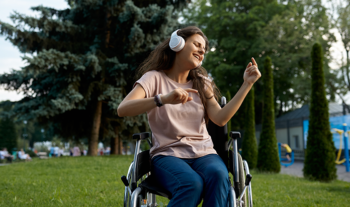


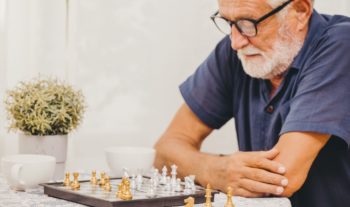


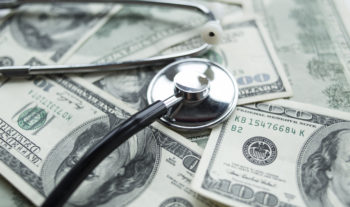
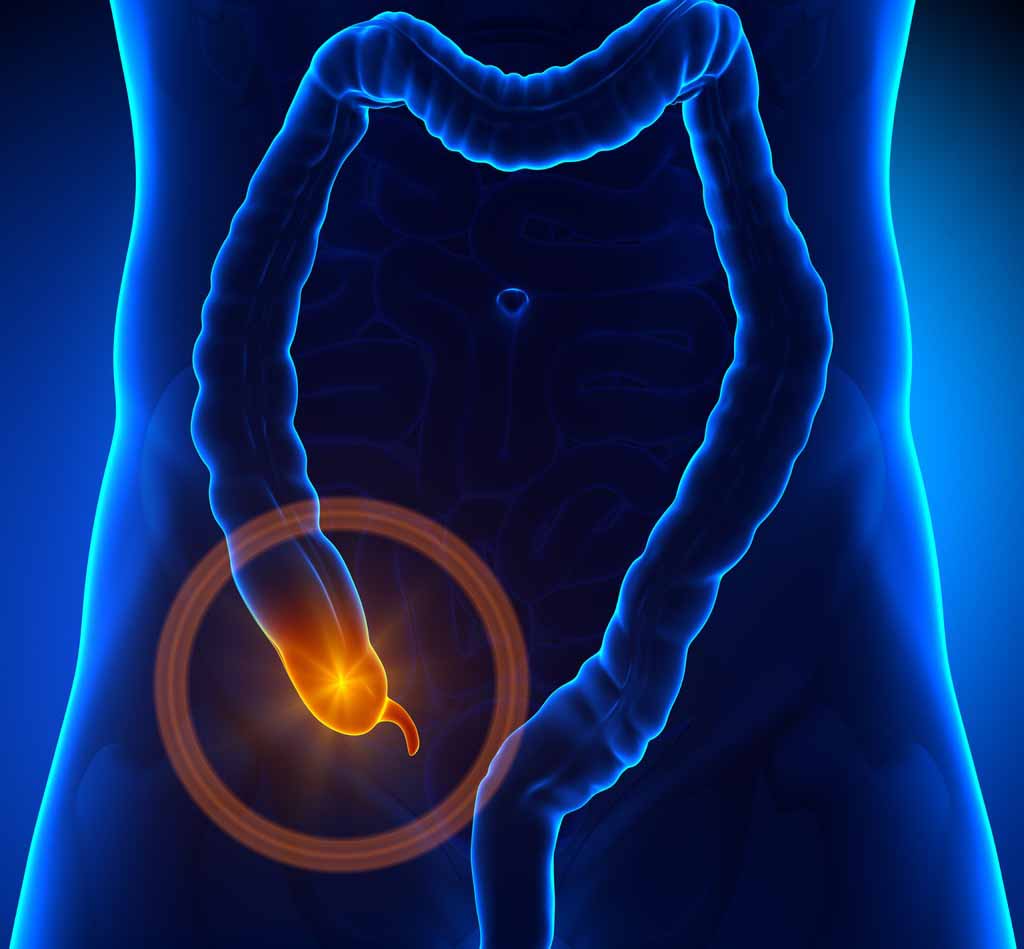
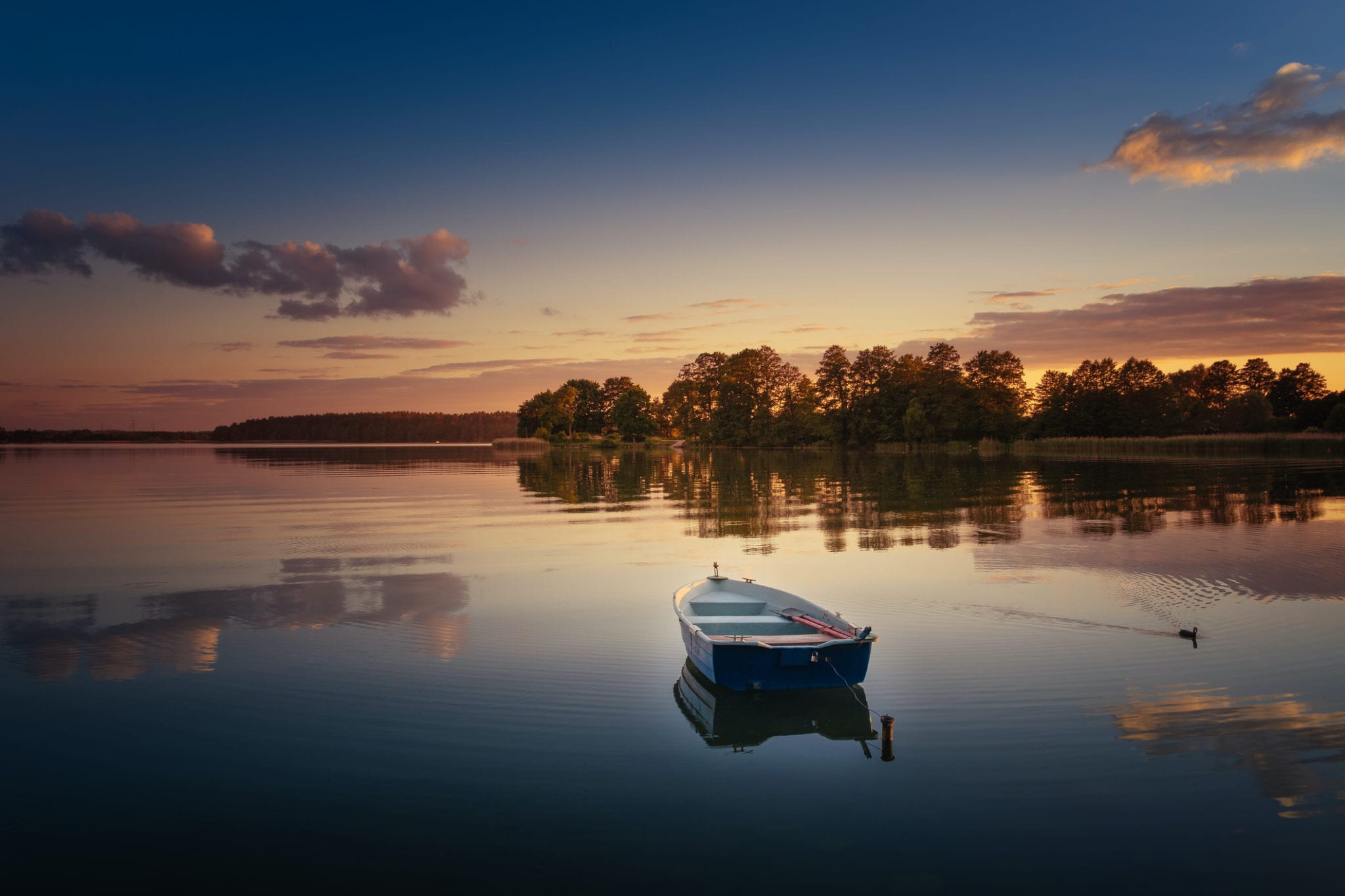

Great Info in This Blog Thank For SHaring THis
Thank you for reading it! I have received many letters from people I don’t know, and people I do who didn’t know my story about my journey with this condition. The responses reinforce my decision to talk about this not-so-rare disease and make me glad I did. If in writing it, I helped just one person, then I am so glad I did amd plan to write more.
Thank you for sharing your story with us.
Its really helpful for me.
How you explain your new steps, new love and determination its inspirational for me
Thank you for sharing your story with us.
Its really helpful for me.
Really appreciated